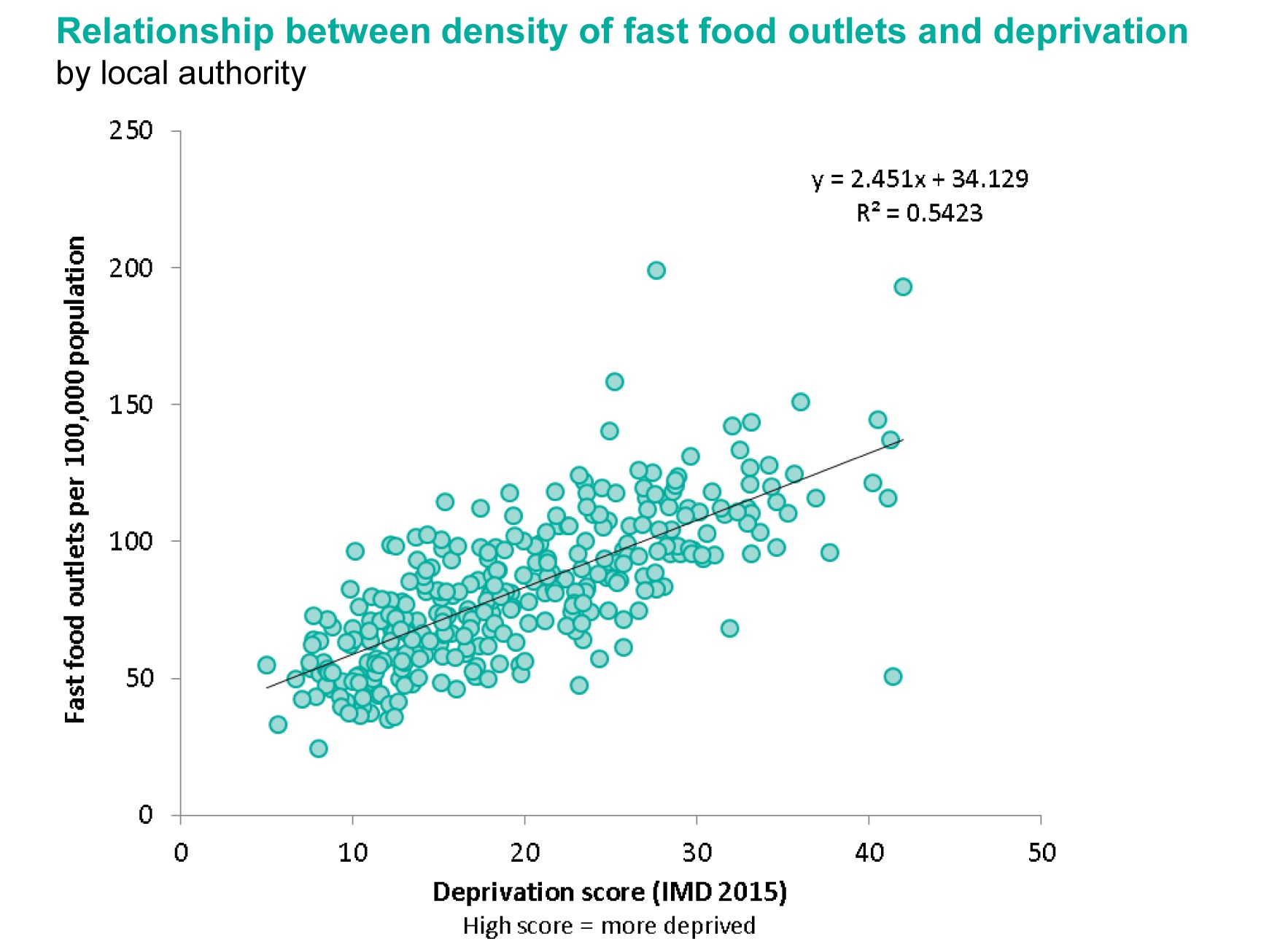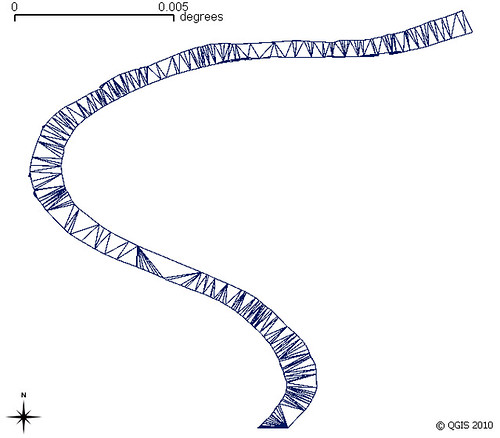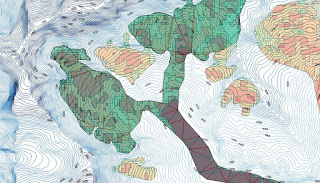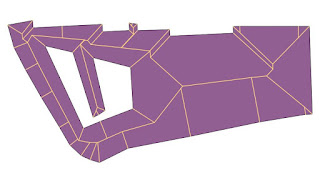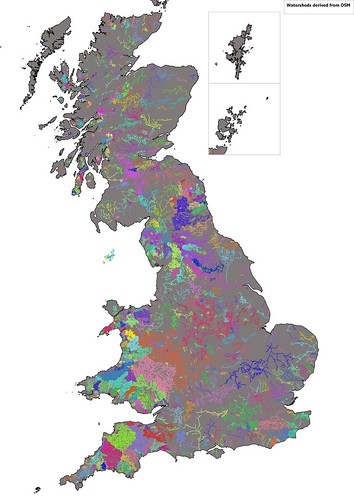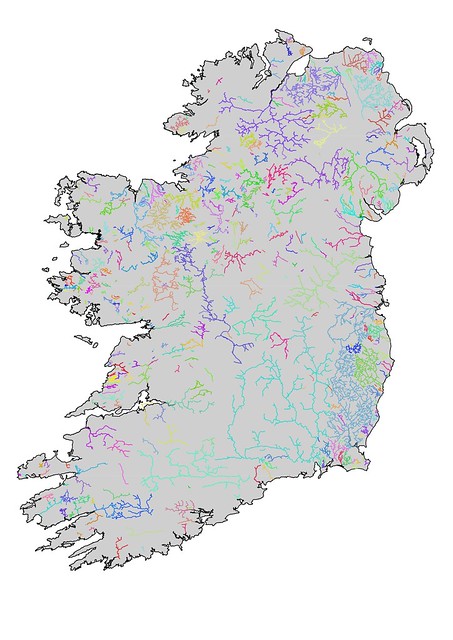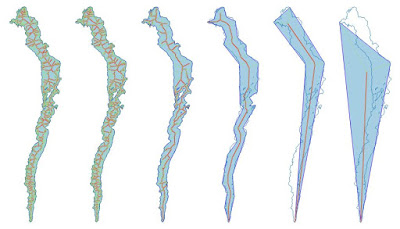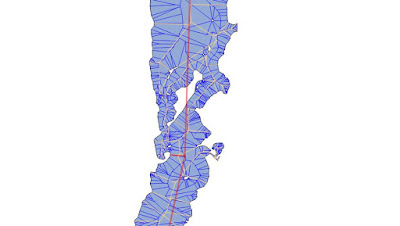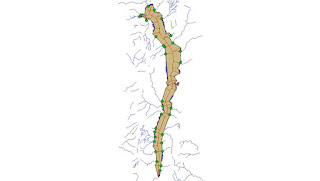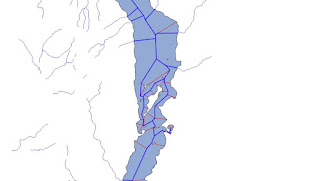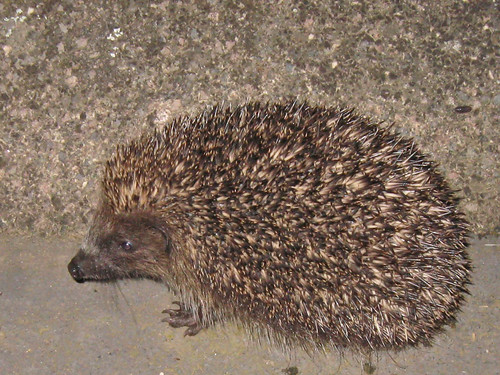I've finally (after 8 months) got around to looking
at the OpenMap Local buildings. This new dataset was launched at the first OpenDataCamp, and I've had the
SU 100 kilometre square data on the PC since then (it's contains Southampton, where Ordnance Survey are based). I use Meridian 2 OS Open Data regularly and extensively, but these days don't make much use of the larger scale vector data.
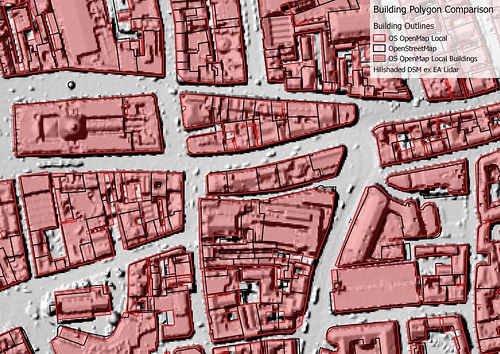 |
Comparison of Building polygons for Central Nottingham
OSM has more detail and does not merge discrete buildings.
Contains Ordnance Survey data (c) copyright and database right 2015, OSM data (c) OpenStreetMap contributors 2015, Lidar data from Environemnt Agency under OGL 3.0, (c) Crown Copyright and database right 2015. Image CC-BY-SA, the author. |
I needed them for something else which
caused me to download the
SK data. Co-incidentally Christian Ledermann had asked on
talk-gb about using this data to add buildings to OpenStreetMap for
Newark-on-Trent. A little earlier the Environment Agency had released Lidar data for England, and this is also useful as input for mapping buildings.
OpenMap Local
Apart from the area I originally
needed which were in
SK41 (no buildings in OSM), I've also looked at
areas which I know much better & compared some selected areas where
we have good building coverage around Nottingham. The comparisons I made are shown visually, with my main observations summarised at the end. Note that comparisons have not been made on any systematic basis.
 |
University Park, University of Nottingham
an area of predominantly large academic buildings.
OpenStreetMap and OS OpenMap are largely in agreement: the minor differences applying to newer buildings which post-date the Bing imagery.
Contains Ordnance Survey data (c) copyright and database
right 2015, OSM data (c) OpenStreetMap contributors 2015, Lidar data
from Environemnt Agency under OGL 3.0, (c) Crown Copyright and database
right 2015. Aerial Imagery via Bing, (c) as in image. Image CC-BY-SA, the author. |
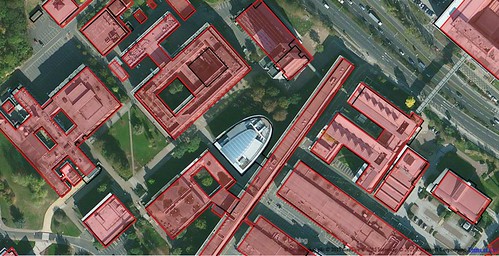 |
The Science City part of the University Park campus.
A new large lecture theatre block is not present in OpenMap data, and the outline of the building top centre (Tower Building) is over-simplified.
Contains Ordnance Survey data (c) copyright and database
right 2015, OSM data (c) OpenStreetMap contributors 2015, Lidar data
from Environemnt Agency under OGL 3.0, (c) Crown Copyright and database
right 2015. Image CC-BY-SA, the author. | |
|
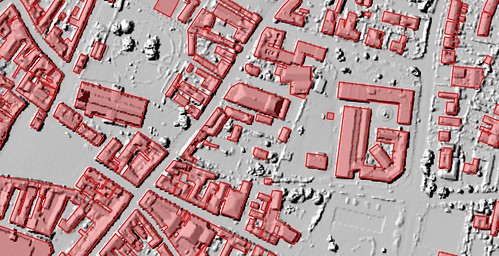 |
Central Newark. OpenMap vs Lidar.
Many instances of building merging & over-simplification are apparent here, notably with the outline of the parish church.
Contains Ordnance Survey data (c) copyright and database
right 2015, Lidar data
from Environemnt Agency under OGL 3.0, (c) Crown Copyright and database
right 2015. Image CC-BY-SA, the author. |
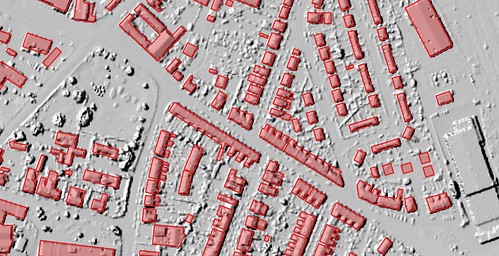 |
Newark-on-Trent, residential areas, Showing inconistency in size for similar houses, and merging of terraced housing.
Contains Ordnance Survey data (c) copyright and database
right 2015, OSM data (c) OpenStreetMap contributors 2015, Lidar data
from Environemnt Agency under OGL 3.0, (c) Crown Copyright and database
right 2015. Image CC-BY-SA, the author. |
I have not made
systematic comparisons, but these are my main observations (in brackets the 1km grid square where I've noted any particular issue):
- Best for larger buildings.
The data seem much more reliable (actually matching building footprints
fairly well) for larger buildings. Even for large detached houses I
would regard the data as unreliable: on our road of 40 detached houses,
at least 16 are represented as terraces (SK5439). Similar artefacts occur in
other areas with detached houses: apparently caused when a garage is
close to both houses. Smaller houses are inherently simplified: no
better than drawing one in JOSM and then copying the outline in fact.
- Building fusion. This is particularly clearly seen in the city centre image, where a whole block of buildings has been simplified to a single building (centre of image), but also occurs in suburban housing (see above).
- Inconsistency in geometry simplification. This is most noticeable in the city centre. (SK5739). For instance compare the OSM and the OpenMap Local outlines for St Peter's Church (bottom right in map above). In OpenMap Local the church is just shown as a rectangle, whereas in practice it is more complex. Modern buildings on the Jubilee Campus of Nottingham University are generally shown with more detail.
- Inconsistency in building size. In SK5439 there are a very large number of houses which were identical when built. However, in the OpenMap Local they are often of different sizes. (This is also probably true of OSM, if buildings have not been created by duplication).
- Voids. Gaps between closely packed buildings in the city centre appear slightly arbitrary in both placing and whether such a void exists or not.
- Some selection inconsistency with small size buildings. Only 2 garages are shown in an area of around 500 houses. With OSM the figure is nearer 200+. (SK5439)
- Demolished buildings.
Whilst I would not expect the data to show the building demolished in
the past month, I would expect it to not show one demolished 2 years
ago, and I would certainly expect it not to show one demolished in 1970
(although MasterMap shows this too). (SK5439)
- Better locational accuracy.
If using the full transform it may be useful to take advantage of the
better locational accuracy of this data. In the main OSM buildings are
rarely more than 3 m displaced from the OS OpenMap Local. (SK5439) In general the more recently mapped buildings in Nottingham
city centre have better locational accuracy than this (SK5739).
Taken together, my use of this directly within OSM would be along the following lines :
- Selective
transfer of larger buildings (schools, offices, public buildings,
factories, warehouses, larger shops) on a case-by-case basis from a
shapefile to a JOSM editing layer, or to Potlatch 2. Some minor refinement will probably
be needed (for instance a university building here has long narrow
courtyards which act as light wells which are not shown in OpenMap
Local.
- Only use it for houses and similar when shapes are very
simple and everything has been double checked, at the very least,
against aerial imagery. For simple shapes it's as quick to draw &
copy in JOSM anyway. A similar principle holds for more complex building shapes on
modern estates, where one building can be cloned.
- Watch out for demolished buildings. This requires not just checking against Bing/MapBox imagery, but some local knowledge for sense checking.
Environment Agency Lidar Data
Another source of building data is the recently released Environment Agency Lidar data. This does not cover the whole country, and in many places may only be at 1 or 2 m resolution. It may also be quite old. However, because it does not suffer from parallax artefacts it can be used in conjunction with both aerial imagery (whether from Bing, MapBox or more local sources) and OS OpenData. I have provided examples from Nottingham, Newark, and Melton Mowbray of this data, combined with one or more of OSM buildings data, OS OpenMap or Bing aerial imagery.
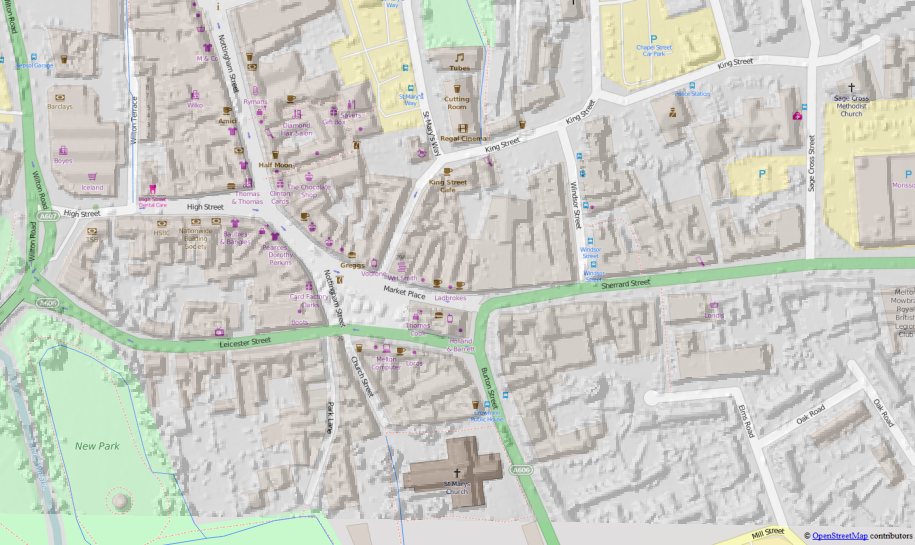 |
Melton Mowbray. EA Lidar DSM (1m) overlaid on OSM.
The Lidar data was used to refine the OSM building outlines
which originally were traced from OS StreetView as block-sized polygons.
(see commentary) |
Melton Mowbray illustrates many of the benefits of Lidar data. It is a fairly typical country town, with many of the buildings in the town centre ranging in age from 10 to 500 years old. Many extend back from the street in a series of outbuildings (e.g., stables) which have eventually been incorporated into the main building, but this process leaves lots of small courtyards, service yards, etc which are more or less impossible to discern on aerial imagery.
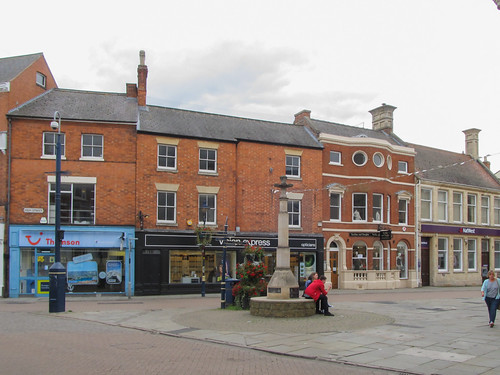 |
Butter Cross in Market Place, Melton Mowbray
Despite the different styles & ages of the buildings, several have long ranges at the rear. |
By doing a street-level ground survey one can identify which buildings are distinct on the street front. Lidar than helps to construct a building outline which is consistent with this. I surveyed the cetre of Melton in September, and this was the first place where I used Lidar data to aid in the interpretation of aerial imagery. In this case I find it essential to have adequate street level pictures to be able to relate to the aerial imagery: most useful are the presence and distribution of chimneys: because they throw shadows they are often visible even on poor quality imagery.
The Lidar data also allows one to do some other things: notably find building heights. I've done this for a 1980's estate on the edge of Maidenhead: particularly easy as the residential buildings fall into a small number of categories: bungalows, two-storey-houses & maisonettes (purpose built flats in a house-like structure.
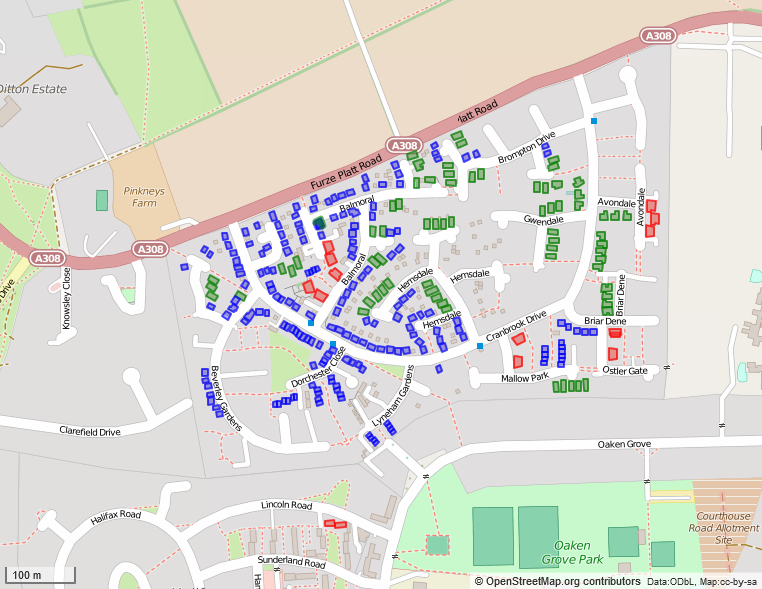 |
A 1980s housing estate with building heights mapped from English Environment Agency LIDAR
Open Data. Buildings fall into 3 height categories: bungalows (green:
approx 4m high), 2-storey houses of various kinds (blue: approx 6 m
high), and maisonettes (condominiums) which are about 7 m high (red).
Heights were calculated in m, so the values represent minimum heights of
the highest part of the building, which is nearly always the gable line.
Outpur via Overpass Turbo, styled with MapCSS. |
There are many other useful blog posts about using this Lidar data, both specifically for OSM, but also generally. See posts by Chris Hill (
"More Lidar Goodness" and
"Building Heights") and
Ed Loach for some of the specifics, and the write-up on the
wiki. A
nice post and
map (v. slow in my browser) showing building heights in London on OpenMap Local may also be of interest. HousePrices has processed all the Lidar data from EA and Natural Resources Wales as a
hillshaded slippy map which is useful to look at what is available. Slightly unfortunately the map is in OSGB projection (ESPG:27700) and is not shown with other slippy maps which would make it a bit easier to locate oneself.
What kind of building data should be added to OSM?
From
past experience single building outlines traced from OS StreetView, turn out to represent tens of buildings on the ground. Such simplified outlines just makes the work of
splitting the buildings properly quite a lot harder. This can be
particularly bad in town/city centres.
Usually if adding detail of POIs and addresses it is important to have individual buildings mapped: this makes it much easier to correlate photos to roofline features such as chimneys, gables etc. A single very simple outline may be OK, because for more detailed mapping it should just be a question of deleting the original outline. However, the question must be asked, as to what purpose such an outline fulfils on OSM, when the source data can be readily combined with OSM data for downstream consumption.
I think the fundamental question about straight imports into OpenStreetMap should be "Will it make life easier or harder for subsequent mappers?".
If the work involved refining a building outline takes longer than re-drawing the building then I doubt if its worth importing the building at all. This is particularly true if the outline is actually of multiple buildings. This is why large building outlines are most valuable: they are generally pretty good compared with what an initial hand-traced outline might look like, and they lend themselves better to stepwise refinement. One group of buildings I find particularly tedious to do well are schools which tend to be a sprawling mass of interconnected buildings. Starting with a decent polygon with orthogonalised angles make adding such detail much easier. The current quarterly project for UK-based mappers might be the time to test this.
Of course it may be that adding buildings assists in some other mapping goal. I've already mentioned that details of buildings are very useful for addresses. However OpenMap Local lacks the detail in precisely the areas where it would be most useful (city & town centres). For suburban or inner-city housing similar polygons can be created as quickly in OSM editors (notably in JOSM, by duplicating existing buildings or using the Terracer (or even
UberTerracer) plugins.
The other thing which many people want is rendered maps largely derived from OSM, but showing more buildings. In practice, because many mappers do not have the know-how, wherewithal or time to create such a rendered view, they tend to want to import buildings. Historically, OSM tools for importing data are often much easier to use than ways to incorporate the same data
and OSM data to render maps and make them accessible on the web. Perhaps we need to do more to help people in the latter task: which is now getting more complicated again with the move to vector tiles (at least outwith use of MapBox Studio), and TileMill's effective status of being a legacy application.
Summary
Sadly, although the new building outlines are better than what preceded them, in most cases they don't offer a decent route for iterative refinement with OpenStreetMap.
This absence of a simple way to improve building outlines means that ideally people wishing to use this data would merge it with OSM data outside of OSM. I do recognise this is often too much work, or too big a learning curve for many, and consequently there will always be a desire to add buildings to OSM because many people are much more comfortable with consuming only OSM data for their purposes.
Existing tools for drawing buildings in OSM are pretty powerful & getting more powerful all the time. Many of us, and I include myself in this group, are unaware of the full extent of these utilities. See bdiscoe's
diary post about mass adjustment of circular buildings (huts) for some insights.



